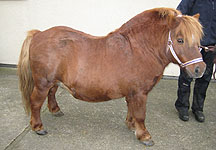This has been a very busy week for us at Ridings Equine, unfortunately the spring grass and relatively hard ground have been causing a lot of problems for our lovely patients!

As previously mentioned in our 'Spring Emergencies on the Rise!' blog by Jenny, the spring grass has continued to flourish with the spells of rain and warm weather we've been having making our once bare paddocks into large sweet shops for our horses and ponies!
The high levels of sugar in this grass can cause weight gain to occur incredibly quickly- up to 23kg in one week is the record we've heard of so far!

So what is laminitis??
Laminitis is an inflammatory condition affecting the hooves which causes lameness. The blood flow to the sensitive laminae of the foot is compromised, resulting in swelling and inflammation of the tissue within the hoof causing pain. Obese or overweight horses and ponies are at significantly higher risk of developing laminitis.
We split the causes of laminitis into the following three categories:
- Endocrine laminitis- when the cause of the laminitis is associated with a hormonal disorder or disease (endocrine) and is the most common cause of laminitis that we see. Both cushings disease and Equine Metbolic Syndrome are hormonal conditions linked to laminitis.
- Toxaemic laminitis- where sepsis elsewhere in the body causes laminitis to develop
- Load-bearing laminitis- where one limb is unable to bear weight fully (e.g. a fracture) and the opposite limb bears more weight, resulting in laminitis of that limb.
What signs would my horse or pony show if they had laminitis?

There are several signs that we associate with laminitis, the main one noticed by owners being lameness but there are other signs you can look out for including:
- Lying down- if your horse or pony does not usually lie down but you have noticed an increase in this behavior it can be associated with foot pain
- Unwilling to move or stand
- Weight shifting
- Difficulty picking up one or more feet
- Foot soreness following walking on a hard surface
- Rings on the hooves that diverge (wider at the heel than the toe)
- Short strides particularly on a hard surface
- Warm hooves
- A pulse in the digital arteries at the back of your horses fetlock
- And of course lameness- in one or all four feet!
For a helpful laminitis assessment checklist please follow the link below!
https://www.careaboutcushings.co.uk/files/prascend-lp-laminitis.pdf

What should I do if I suspect my horse or pony has laminitis?
Please call us as soon as you notice symptoms- laminitis requires prompt treatment from your veterinary surgeon. We may recommend a course of pain relief, box rest and implement a weight management plan if there are concerns regarding obesity.

An acute episode of laminitis is very painful and warrants treatment as soon as the clinical signs are evident. Early treatment also reduces the long term damage that can be caused by the disease. We may also recommend radiography (x-rays) to be taken of the feet to assess for any pedal bone rotation and to identify any other issues that may be present in the feet.

Working closely with your farrier we will discuss the most appropriate management going forward which may include placing shoes or recommending specific shoes such as heart bars to provide additional support to your horses feet.
We may also recommend testing for conditions such as PPID (Cushings) and EMS (Equine Metabolic Syndrome) after examination to identify any underlying hormonal cause.
Hopefully this blog has offered a little bit of an insight into the causes and symptoms of laminitis- if you are concerned your horse or pony may be suffering from laminitis or would like some further information regarding laminitis please don't hesitate to call us on 07747 771182
Alex xx

